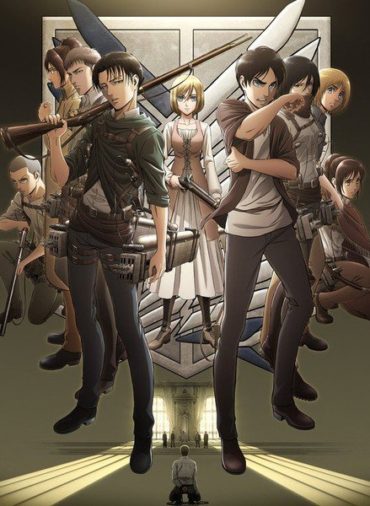Spring Season 2019 – It’s Over! So what was that all about, then?
Spring 2019 looked promising. We mentioned our excitement in the Spring Preview about Sarazanmai, Fruits Basket, One Punch Man Season 2 and Bungo Stray Dogs 3 – and the long-awaited, highly anticipated second part of of Attack on Titan Season 3 (what was in that basement?). But as the season fades away, some of our writers have been left feeling a little short-changed. With a few honourable exceptions (and surprises) in the new titles on offer, which series delivered – and which ones left us somewhat disappointed?
Demelza:
The Spring Season has now come and gone. Although I was previously excited for all the new series, as the season went on I started to fall out of love with the majority of them – the biggest disappointment being the anime adaption of We Never Learn!
I never expected the anime to live up to the wonderful artwork that mangaka Taishi Tsutsui draws every week, but not even the music or direction was quite up to snuff. The soundtrack often felt misplaced and jarring, playing up the wrong scenes while the decision to adapt more than two chapters a week was a poor one. I understand wanting to get to the point where all of the female cast could be in the anime, but this rush meant we lost out on key character development. The show was never going to win over newcomers, but even for die-hard fans such as myself it has been a hard sell. I’ve personally still enjoyed seeing the cast in motion and the whacky situations play out, but I can certainly see why others haven’t stuck with it.
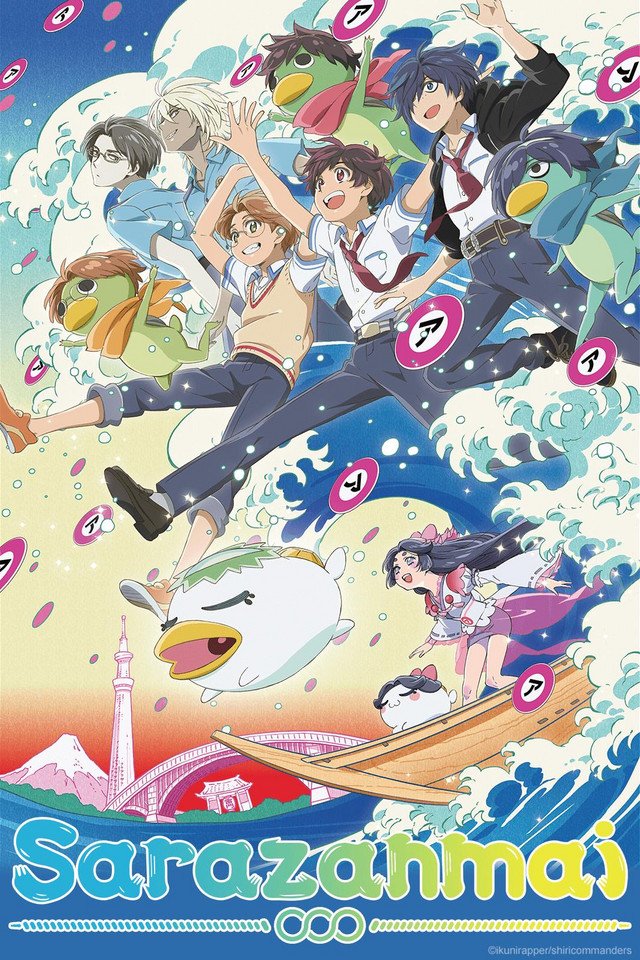
But enough with the doom and gloom, let’s talk about a show that I did enjoy – Sarazanmai (Crunchyroll and Funimation). Up until now I’d never watched any of Kunihiko Ikuhara’s works before, so the director’s quirky style was completely new to me. I quickly fell in love with the story Sarazanmai was telling, cheering for our three main characters (Kazuki, Toi and Enta) while at the same time slowly working out the mysteries behind Keppi and evildoers(?) Reo and Mabu. The series managed to make me successfully care for friend and foe alike, with the final two episodes keeping me glued to the screen as I prayed for a happy ending.
It’s difficult to put into words what makes this series special. Three kids transforming into kappas, defeating zombies to obtain Dishes of Hope doesn’t sound all that interesting admittedly. The joy comes from watching the secrets the kids process, leaked to one another during their battles and how that then changes the relationships between them. Friend and foe alike are well developed and varied enough so that everyone will find a character to like. You have to watch the first episode to appreciate what Sarazanmai is trying do because words just can’t do it justice, but trust me – it’s well worth your time.
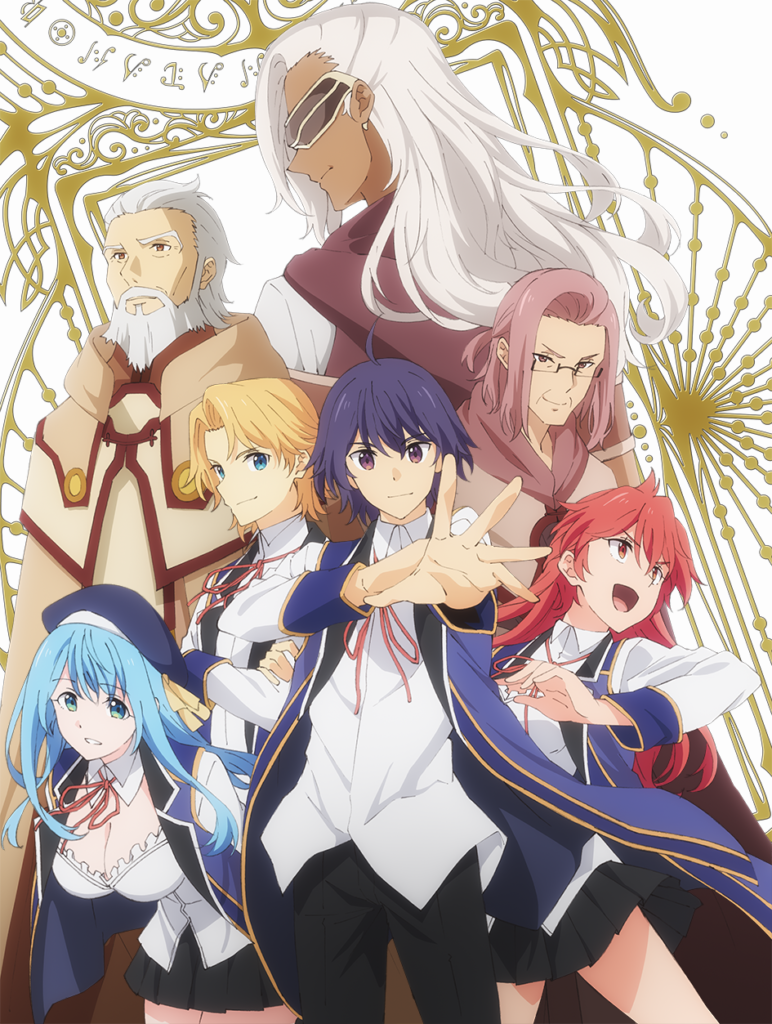
Another surprise hit for me this season was Wise Man’s Grandchild (Funimation). Our main character, Shin, once your average Japanese salaryman, unfortunately dies from overwork. However, luckily for him, he’s reborn in a new world with his memories intact! In this world he’s adopted by Merlin Wolford, a legendary hero. Merlin and his friends teach Shin everything he needs to know about combat and magic but thanks to Shin’s old memories and abnormally strong stats, he’s become a hero all of his own. Topped with the fact Merlin forgets to teach Shin any common sense when it comes to handling his powers, Shin is a lost cause who sees no problem with using magic powerful enough to destroy a mountain!
Wise Man’s Grandchild is your fairly stereotypical isekai adventure and while it certainly doesn’t do anything to break the mould, if you’re looking for another show like this, you’re going to have fun. What the series does best is offer an entertaining comedy with a likeable cast of characters. The animation (handled by studio Silver Link) is bright and colourful, with striking action scenes. Once Shin joins a magic academy, a few episodes in, the number of characters grows drastically which ensures there is something for everyone. Each of the students Shin spends time with specialises in a different kind of magic, which makes battles all the more interesting visually. This is definitely a show that’s not for everyone, but those who like the isekai genre will definitely enjoy it. I really hope someone licenses the light novels in the near future so I can enjoy more of Shin’s adventures!

Finally I’d like to give a quick mention to Isekai Quartet and Fairy Gone. Both series have been up and down in terms of their quality, episode to episode, but I’ve enjoyed my time spent with them. Fairy Gone will return in the autumn for its second season, which hopefully explains some of what’s been happening throughout this first season. Being a fan of author Ao Jumonji, I’m confident that everything will come together neatly in the end so I’m willing to overlook the slow start and unanswered questions for now. In Isekai Quartet’s case it was refreshing to see the heroes of KonoSuba, Re:Zero, Overlord and The Saga of Tanya the Evil in a new light. While not all the series worked quite as well as KonoSuba when it came to the comedy, that didn’t matter in the end because watching them come together to solve their problems was rewarding. With a second season announced and a new series hinted to be joining the group, I’m really looking forward to what’ll happen next!
We Never Learn is streaming on Crunchyroll, while Fairy Gone and Wise Man’s Grandchild are on Funimation; Isekai Quartet is on both Crunchyroll and Funimation.
Sarah:
Orphan Tohru Honda is now living in the household of novelist Shigure Soma (the Dog in the Chinese zodiac) and attending high school with his two younger cousins Yuki (the Rat) and Kyo (the Cat). When hugged by a member of the opposite sex, the Soma children turn into their zodiac animals – and, to double the inconvenience, when they turn back, they’re naked. Tohru has learned the secret and been threatened with having her memory wiped – but as she’s discreet, thus far she’s been spared that fate. Unlike others who have become involved with the family, she learns, leading to much heartbreak and despair. However, Tohru’s optimistic nature breathes new hope into the lives of the cursed family, lifting their spirits and offering maybe – just maybe – the chance of breaking the curse one day. But until then, she tries to keep the peace between the constantly feuding Cat and Rat who have both – in their own ways – developed protective feelings toward her. Whether these go beyond the bonds of ‘brotherly’ love remains to be seen…

Sometimes an anime series doesn’t live up to the hype. Sometimes a second season is a major disappointment after an impressive first (One Punch Man, I’m looking at you, even though it’s for all kinds of reasons.) So Fruits Basket (Crunchyroll, Funimation) has had so much to live up to (fans’ fond memories of the original anime, readers’ expectations based on the manga…) and, happily, it has managed to address those concerns successfully – and also, I believe, achieve its own identity: a fresh and refreshingly different take on this beloved shojo classic. Fascinating little snippets of information have filtered through as mangaka Natsuki Takaya has been involved in the making of the series; one that resonated with me was the fact that the older characters (Hatori) don’t smoke any more. Smoking a cigarette is so often a symbol in manga signifying an older, more sophisticated character – or a delinquent attitude in a high school student. There’s a kind of bad-ass glamour associated with it – although, of late, some manga protagonists have been seen giving up the habit, so perhaps the health message is getting through?
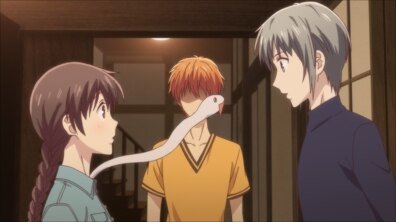
So how does ditsy heroine Tohru Honda (kind-hearted to a fault and live-in housekeeper for the Soma family to earn her board and lodging) come across in 2019? One of Tohru’s strengths is that underneath her gentle exterior, the circumstances of her life and her dead mother’s influence have made her strong: a quiet but staunch empathizer whose steadfast character leads her to challenge young clan head Akito’s hold over the cursed Soma household. Akito already recognizes the changes Tohru has wrought and their one ‘chance’ encounter so far, has been ominously terrifying. I haven’t been comparing the original anime to the current one, just trying to watch it for what it is and I really like the characterization (I also prefer the Japanese voice cast, sorry, Funimation!) both in the character drawing and the animation. By Episode 13, we’ve reached the halfway point in Season 1 and the various plot threads are skilfully being laid in place. Tohru has not yet met all the zodiac children but her delight in these encounters and the way they warm to her is the greatest threat to Akito’s influence and reign of psychological terror. Is laid-back Shigure the one pulling the strings by inviting Tohru into his house, quietly manipulating from the shadows?
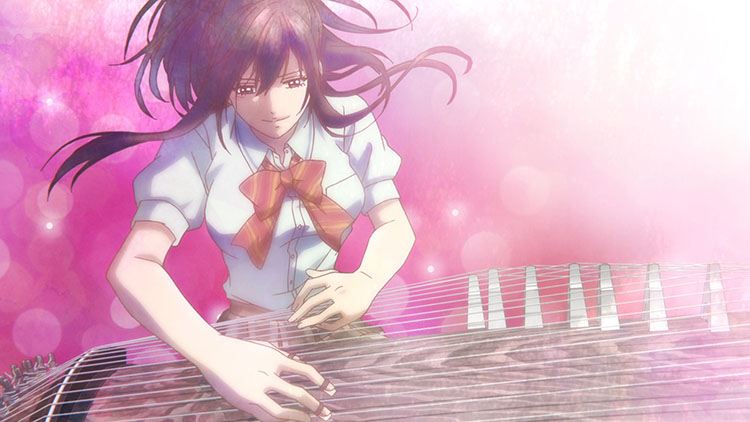
A high school music group is about to fold due to lack of interest, then is rescued by a couple of unlikely but determined students who, in turn, attract new members. They go on to win a challenge set by the deputy head by performing to the whole school and then start taking part in inter-school competitions. Scratch out music and insert a sport of your choice and you have a winning formula for an episodic drama, especially when the protagonists are colourful (studious megane sempai; rebellious ex-delinquent; child prodigy; girl with a chip on her shoulder etc.) and their seemingly disinterested teacher/mentor has a significant secret in his past.
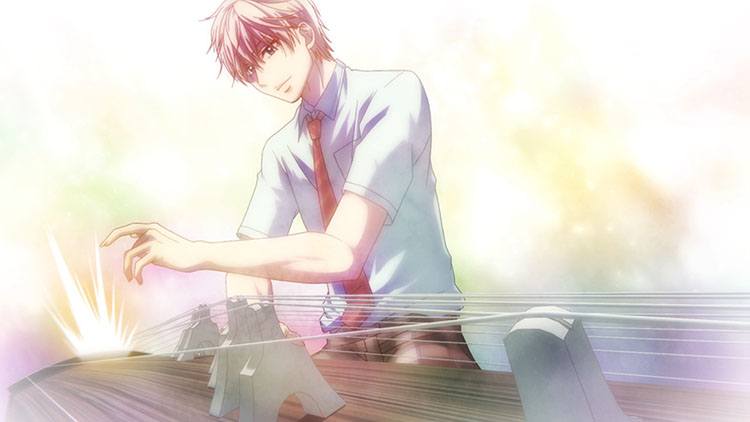
So far, so soap – and, to my occasional disappointment, Kono Oto Tomare! Sounds of Life (Funimation) has the bad habit of falling back too often on over-dramatic soapy melodrama. It doesn’t come anywhere near last year’s superb high school slice-of-life drama After the Rain and it doesn’t really do subtle. However – I’ll forgive it because of the subject matter: the koto. These kids are not playing in a jazz band, a wind ensemble or even a rock group but a koto ensemble: the traditional large zither-related instrument which is played with plectra strapped to the finger tips. The koto pieces performed in the competitions have been thrilling to listen to and the little technical details inserted into the drama as the students fumble their way forward, practising and learning to read the koto tablature, are fascinating. It’s just a shame that the back stories of the characters tend to be handled in a melodramatic fashion – and poor, gentle megane sempai is still relegated to second fiddle in the relationships stakes. (Who will win the heart of smouldering, difficult around people prodigy Hozuki? Duh…) Now that our heroes are out in the world of competitive festivals, we get to meet the rivals, setting up some potentially interesting clashes when the series returns in the autumn.
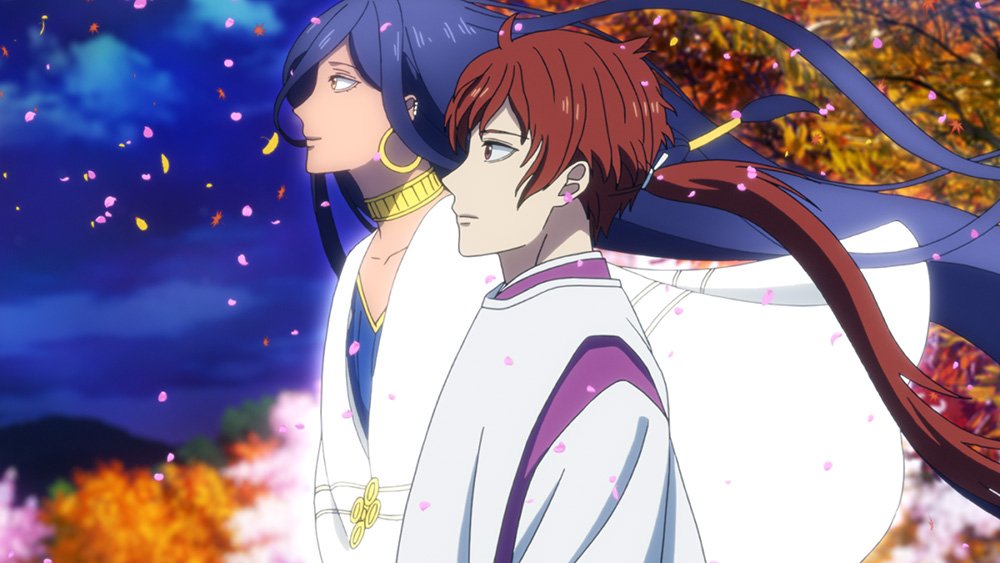
Midnight Occult Civil Servants (Crunchyroll, Funimation) was an engaging watch throughout its twelve episodes but was let down by some dismal artwork and animation. The idea of civil servants policing the occult inhabitants of Tokyo (from tengu to fairies and angels) is an attractive one and main protagonist (and newest recruit) Miyako Arata finds his skills are much valued by his colleagues. He has the Ears of Sand which enables him to communicate with the Anothers and find out what’s troubling them. It turns out he is the present-day incarnation of Abe no Seimei, the legendary Heian onmyoji – and he seems to attract spirits and gods. To be honest, this series is something of an ‘Another of the Week’ but none the worse for it as the characters are intriguing as are the folklore sources used by the writers which dip into cultures other than Japanese for inspiration. So, definitely worth your time if you’re a fan of series like Natsume’s Book of Friends or Tactics.
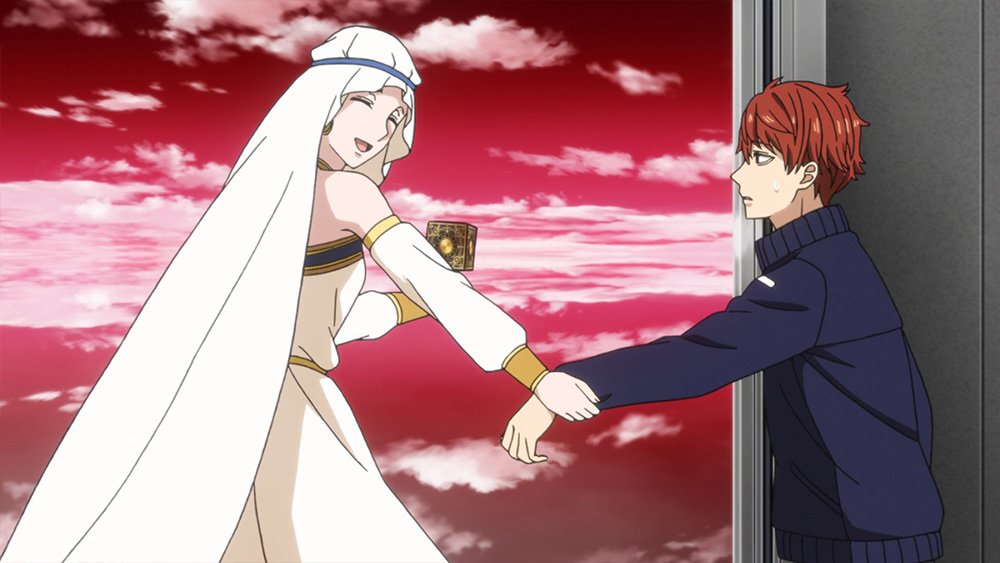
Which brings us back to…Sarazanmai! (Crunchyroll, Funimation) Demelza has already written eloquently about its strengths and who am I to disagree? I loved it and am about to rewatch it as it’s so full of self-references that it repays multiple viewings. The Funi dub is well worth picking up too – the singing voices of the five main US actors have been commented upon elsewhere (and the songs which recur in most episodes are very important) and they do a really fine job. Eternal themes of connection, desire versus love and an age-old war between otters and kappa underpin this narrative that delights in being different. The songs (not just the excellent OP and ED) are striking for the way Ikuhara weaves them into the drama. In this context (like the transformation scenes in so many magical girl shows) Saranzanmai owes a lot to the musical, stopping the action for a set-piece that tells the audience important things in a different way. I can only wish it could have been a little longer: twelve episodes, rather than eleven…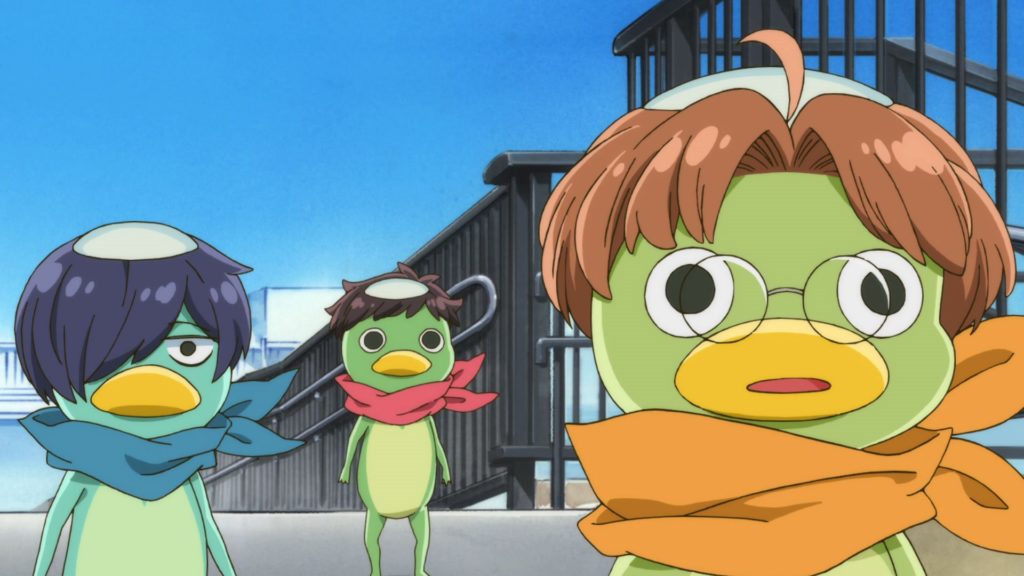 …would have allowed for the slightly rushed final episode to breathe. One to watch!
…would have allowed for the slightly rushed final episode to breathe. One to watch!
Cold Cobra:
Looking back at the Spring Preview I chose two shows, specifically Bungo Stray Dogs Season 3 and One Punch Man Season 2… One has held its great quality throughout the Spring Season, one held its mixed-to-poor quality throughout the Spring Season. Can you guess which is which?!

Bungo Stray Dogs has been a real treat this past season. It started off with a fun flashback arc and then transitioned into a story focusing on an new antagonist while getting the Armed Detective Agency and the Port Mafia to once again wage war against each other, calling back to the original season. While it did this, it brought back an old foe and gave our lead protagonist and his anti-hero enemy/ally some good character development, plus gave the previously rarely active heads of the respective groups some time in the sun as well. It did all these things to a really high quality while the animation from Bones was top-notch throughout (to the surprise of nobody). This is another case alongside My Hero Academia (also by Bones, hmmm…) that shows adapting a manga in seasons rather than adding in a bunch of filler is the best way to tackle it.
One Punch Man on the other hand has suffered quite badly in its second season, mostly due to the animation team being good at best, and poor more often than not. It’s a shame, especially as the series’ entire reason for existing is the action, it has no issue with just throwing in new heroes and villains showing off crazy or funny moves to eat up some air time until our titular one-punch-killing hero arrives, so for it to fail to deliver the visual goods is even more a shame than most. Not to mention the first half of the original series was more panel gag manga stuff that sends up the shonen genre, but it’s ended up a regular shonen show, ironically, just with a lead who doesn’t struggle to take down the big foe at the end…
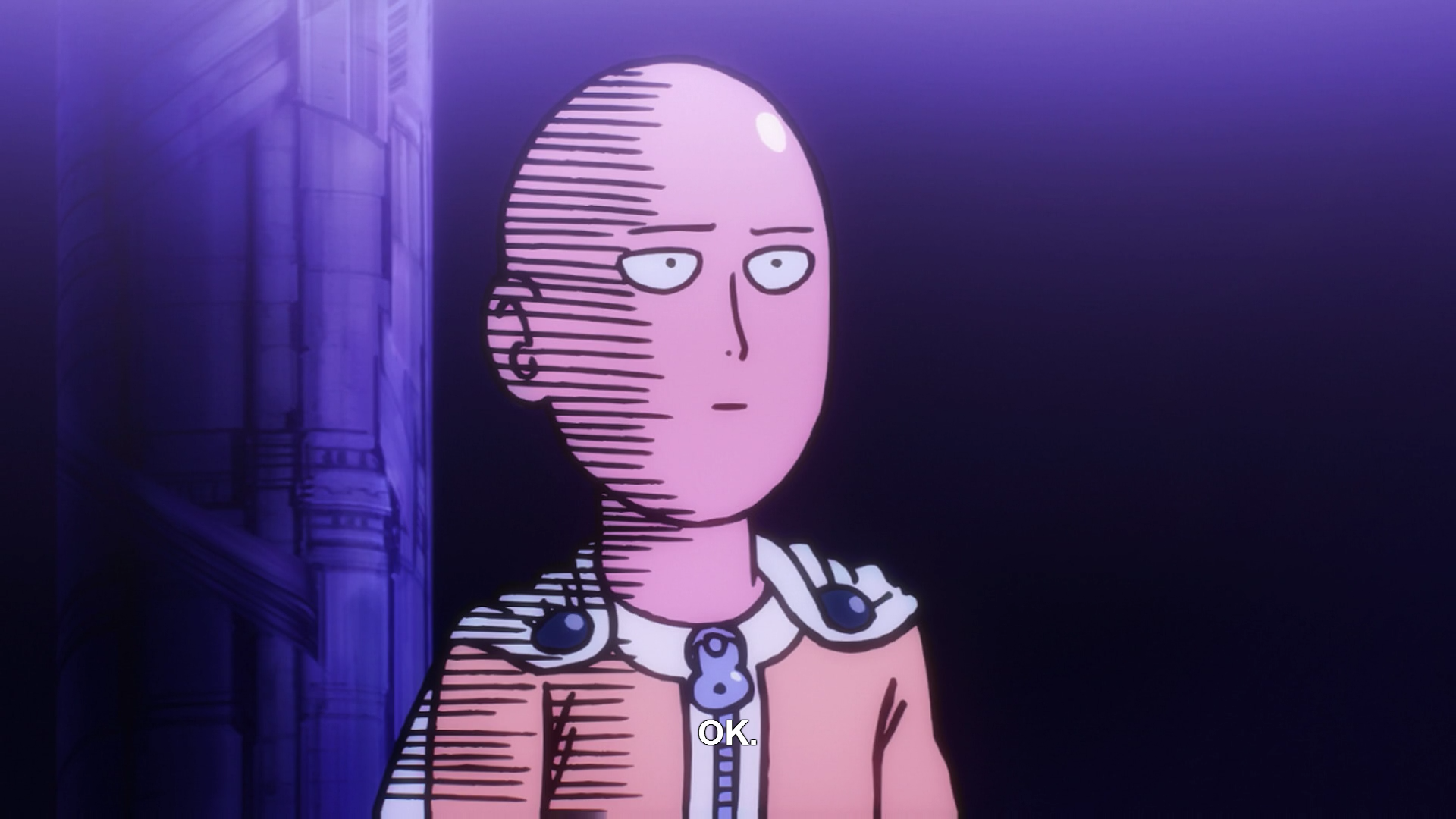
I’d also like to briefly mention Attack on Titan. I’ve seen the last few episodes get a roasting from some (as is always the case when the big mystery behind an entire series is revealed to be something quite mundane and unmagical, so to speak) but I want to say that in spite of what you may think of the ending to Season 3, Episodes 53 – 55 (or Season 3 Episodes 16 – 18) were some of the best shot and generally fantastically dramatic episodes of an anime I’ve seen in a long time. Such wonderfully flawed characters, only slightly ruined by some dodgy CGI…
So, it’s been a good Spring Season for me, especially as JoJo’s Bizarre Adventure Part V has continued to be fun to watch alongside the other three (well, sometimes OPM wasn’t quite as fun, though it was never boring, to be fair!)
One Punch Man is streaming on Crunchyroll. Attack on Titan and Bungo Stray Dogs are streaming on Crunchyroll and Funimation.
Onosume:
This year’s Spring Season definitely felt rather quiet, with not that many new shows to choose from. Maybe we have been spoilt rotten over the past few years with the sheer volume of new things coming out, but it did make for a more relaxed viewing schedule for once, allowing me to appreciate some of the more impressive works this time around.
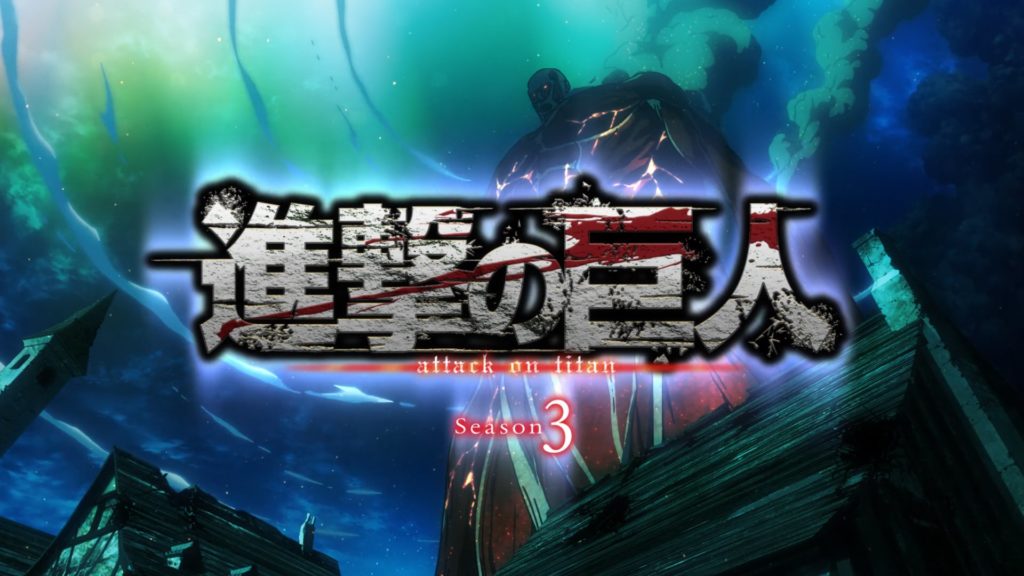
The biggest name this season was of course Attack on Titan, wrapping up its third season with this second part, pitching the Scouts against the Beast Titan in the battle to retake Shiganshina. As I am an anime-only consumer of Attack on Titan, I found this both a thrilling and fascinating end to the arc, as it was not just about the battle against the Titans, but also the secrets of the basement and the entire lore around the Titans’ existence.
The battle was truly phenomenal in true Attack on Titan-style, holding up to be very tense, well-paced, and beautifully animated. It really pulled its punches at creating edge-of-your-seat moments, and even though it was probably going to go our heroes’ way, it was never completely certain, and it did have me furiously wondering which characters had survived during the more brutal attacks.
Yet, the true reason we all came here was to find out what was in that basement, and it sure did throw a lot in. I think at this point, the series could have come to some kind of natural conclusion, or made a statement towards making one; yet the lore introduced here really opens things out for a much longer piece of work. While the series has clearly shown Germanic themes thus far, I didn’t expect it to go all in and make some sort of statement on Nazi Germany’s persecution of the Jews during World War 2, but it kind of just went ahead and did it anyway. While I don’t think the visual reflection was particularly necessary in the context of the story, it does give a new angle on things and adds something other to be aiming for than just re-securing the walls.
Anyway, a slow, measured end to this part of Attack on Titan, but one I did enjoy for the most part.
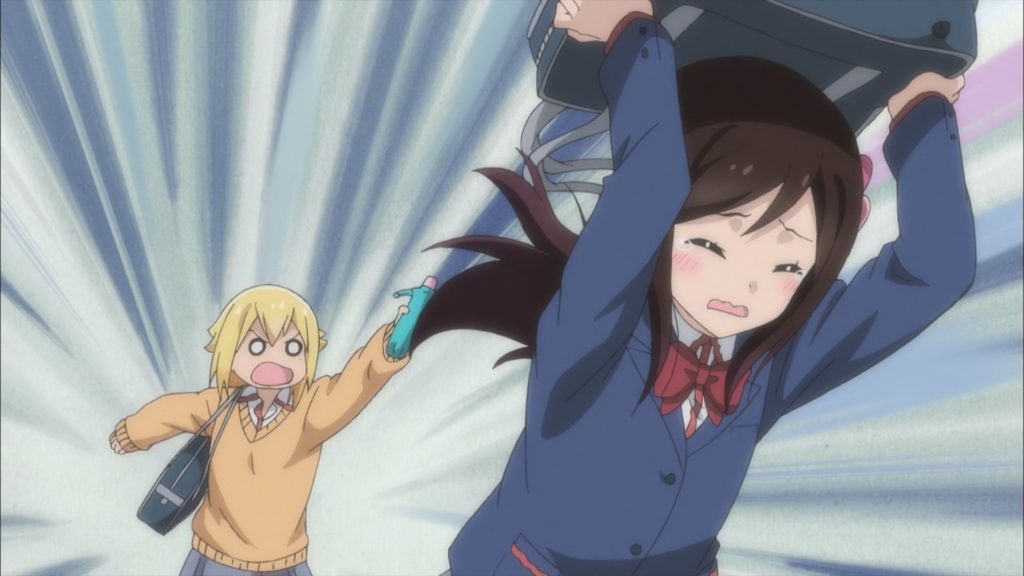
Moving away from tense, action shows; how about something lighter? In our Spring Preview I mentioned that Hitori Bocchi no Marumaru Seikatsu (Crunchyroll) was the one show to go for if you were looking for a light-hearted, slice-of-life comedy; and while this was made out of a decent interest at the start, the show quickly became my favourite of the season.
The series focuses on Hitori Bocchi, a middle school girl who has really bad social anxiety and struggles to make friends. In the transition between elementary and middle school, Bocchi and her best friend Kai are ending up going to different schools. Fearful that she won’t make any new friends, Kai decides to terminate their friendship until Bocchi makes friends with everyone in her new class.
While the set-up of this series has quite a childish premise, and Kai’s approach to the problem is exceedingly dumb, although good-hearted at the core, Hitori Bocchi quickly wormed its way into my heart with its delightful cast of characters. Each of them has been based around a specific personality trait (literally engraved into their names) that really helps them to be easy to understand. You’ve got the lead character Hitori Bocchi (all alone), who may have this social anxiety but is actually very earnest; with an ‘always tries her best’ attitude that just makes you want to root for her. Sunao Nako (honest child), is the first friend that Bocchi makes and although she at first comes off cold and uninterested, she ends up caring a lot for Bocchi and is really the one to watch out for her and encourages her to integrate with the class. In essence she is the complete opposite of Kai, and is in my opinion Bocchi’s true best friend in the way she becomes the closest one to her over the course of the series. Then you’ve got Honsho Aru, (having a hidden nature) who tries to look prim and proper when she’s actually just a normal kid and Sotoka Rakita (came from outside), a foreigner whose love of ninjas helps establish a strange relationship with Bocchi, who becomes her master in ninja techniques.
It’s not like it does much different to other shows that it is similar to, as there’s plenty of goofing off and getting into humorous situations, but it’s really the combination of the delivery and the fact that we haven’t had anything like this for a little while that ensures it carves out its own unique place in this season’s offerings. If you are looking for another cute, slice-of-life comedy, this is definitely one I’d recommend.

Finally, I do want to join Sarah in mentioning Kono Oto Tomare! Sounds of Life. School-based music club dramas have covered a lot of genres, from girl bands in the likes of K-On and the more recent Bang Dream!, to brass with Sound! Euphonium; but now traditional Japanese music becomes the focus with this look at the rise of Tokise High School’s Koto Club.
I love the sound of many traditional Japanese instruments, particularly the shamisen and koto, so that alone was enough to secure my interest, and this series does a lot to convey the beauty of the instrument, picking some particularly thrilling pieces to play that show off the technical skills that you need to play. Of course, the vast majority of the club members are beginners, with only club president Takezo and musical prodigy Satowa having previous experience; yet it still remains very rewarding to see them all pick up this difficult instrument and throw their all into learning it.
In terms of the drama I think I liked it more than Sarah did, although I found it mostly revolves around the bad kid who is just misunderstood, Chika, and Satowa as they both tackle living up to their relatives’ legacies. Chika’s grandfather was a koto maker, but died shortly after his shop was trashed by a group of thugs and the blame placed upon Chika for it. Takezo might be our eyes and ears, but it feels like Chika is really the main character here. The focus on Satowa is largely around her relationship with her parents and being part of her family’s koto school, while there’s clearly a direction in putting her and Chika together.
Takezo does see some action when Hiro Kurusu whirlwinds herself in, maliciously joining to interfere with the club’s chemistry and forcing Takezo to both make a stand and take her reins. This was perhaps the weakest point of the series, as it reaches a gap in between two plot points and flounders, not knowing how to take that next step, while going a bit over the top with the melodrama as I think Sarah alluded to. Yet when everything settles down and it rediscovers its direction, Kono Oto Tomare sets itself as a decent music club anime as it focuses more on the competitive side of play. It certainly has its flaws, but I think this show has secured me continuing with its second cour when it airs in the autumn.
Coming soon: Anime UK News tackles the new shows in the Summer 2019 Preview!


